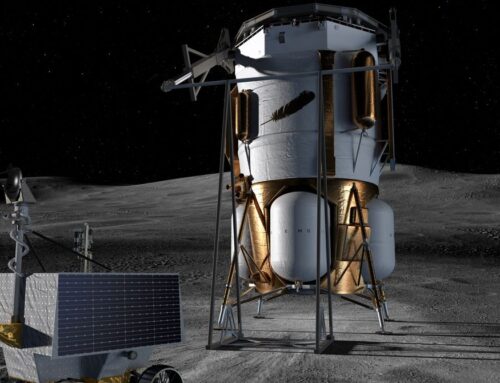Europe’s environment poses economic risks, the European Environment Agency says
October 2, 2025

A report from the European Environment Agency (EEA), published earlier this week, has acknowledged the significant progress of the European Union (EU) in actively mitigating climate change and reducing pollution levels, through strategic frameworks like the Competitiveness Compass and the European Green Deal (EGD).
But it has also highlighted persistent difficulties in areas such as biodiversity protection and fully transitioning to a circular economy.
There is an urgent need for adaptation to climate change impacts, which are causing escalating economic losses and threatening societal resilience across the continent, the EEA says.
Biodiversity and ecosystems
Europe’s biodiversity is declining across terrestrial, freshwater and marine ecosystems due to unsustainable production and consumption patterns, particularly within the food system, EEA’s report has found.
With over 80% of protected habitats in a poor state, this continued degradation jeopardises essential services like food and water security and threatens financial stability. This is especially the case, when close to three-quarters of businesses producing goods and services in the euro area are critically dependent on ecosystem services.
According to the report, the outlook for biodiversity is negative, and prospects of meeting policy targets for 2030 largely off track.
To address this would require fully implementing environmental legislation, mainstreaming action into key sectors, and transforming production-consumption systems.
Environmental and sustainability (E&S) consultants have a strong opportunity to shape policies and legislation, while guiding clients through regulatory shifts and building strategies to reduce business risks.
Although EU biodiversity funding has been increasing, it remains insufficient, widening the obstinate investment gap.
The European Commission (EC) has estimated an annual investment of around €54bn is needed to achieve biodiversity goals, set out in the EU Biodiversity Strategy (BDS) for 2030. Current allocated funds are only half of the required sum.
The EEA report suggests that to meet biodiversity investment needs, strategic planning and increased public-private investments and partnerships will be crucial.
Climate change and adaptation
The EU is a world leader in mitigating climate change and on track to meet its 2030 emissions reduction goal.
All member states have successfully reduced their reliance on fossil fuels for energy and adopted more sustainable energy sources over the last decade.
In 2023, renewable energy sources represented over 24% of the EU′s final energy use, and progress in this area is expected to continue, according to the report.
This represents a historic high, driven by EU policies to speed up the clean energy transition, including the European Climate Law, the Fit for 55 EU policy package and the REPowerEU plan.
There has also been significant progress in the EU′s industrial system, where GHG emissions fell by more than 35% from 2005 to 2023.
However, almost three-quarters of all EU GHG emissions still come from burning fossil fuels for energy.
To reduce these, and improve energy security, a more robust and comprehensive EU legal framework needs to be implemented by all member governments.
According to the report, the EU needs to double its annual rate of switching to renewables to meet its 42.5% renewable energy target for 2030.
Prospects for 2050 targets are reported as highly uncertain. Further decarbonisation will require large‑scale electrification; a switch to hydrogen for certain industrial processes; and the substitution of fossil fuel-based materials with renewable alternatives.
The EEA’s report highlights that the built environment and infrastructure will also require additional policy attention as part of efforts to meet 2050 targets.
Although EU climate spending is on track, slowing clean energy investment, persistent fossil fuel reliance, a large funding gap and poor data reporting threaten progress toward mitigation goals.
When it comes to climate adaptation, the report indicates a positive EU reinforcement in its governance mechanisms, as per the adopted EU adaptation strategy 2021, which has been incorporated into European climate law.
However, the strategy remains a broad vision without concrete targets, which could slow efforts to build climate resilience through adaptation.
Pollution and human health
Significant progress has been made in reducing pollution, with policies to improve air quality leading to a 45% reduction in premature deaths from 2005 to 2022.
Nevertheless, pollution remains a major risk, causing at least 10% of premature deaths in Europe annually and disproportionately affecting vulnerable and socio-economically deprived groups.
It will be challenging to further reduce emissions for nearly all air pollutants because the reduction rates are now levelling off, the EEA says.
Cutting NH3 emissions, especially from the agriculture sector, will be a major challenge, casting doubt on the outlook for pollution reduction commitments in 2030.
Despite the uncertainty around 2030 targets, modelling results in the report show that the EU is largely on track to meet its 2050 targets, provided NH3 emissions reductions are met.
Circular economy
In the past decade, the EU has introduced an increasing number of circularity requirements, simultaneously ensuring waste reduction is becoming the norm, through tools such as the Ecodesign for Sustainable Products Regulation (ESPR).
The outlook for making the circular economy mainstream looks positive and expected to dominate, as the scope of product groups falling under the ESPR increases, and industrial emissions expected to further decrease.
However, the EU is only partially on track to meet 2030 targets. This is threatened by increasing economic growth directly impacting material use, with implementation of circularity struggling to keep pace.
The ESPR could make more products circular and sustainable. But its impact will hinge on the ambition and speed of implementation, the report says.
© Environment Analyst. You may circulate web links to our articles, but you may not copy our articles in whole or in part without permission
CORRECTIONS: We strive for accuracy, but with deadline pressure, mistakes can happen. If you spot something, we want to know, please email us at: news@environment-analyst.com
We also welcome YOUR NEWS: Send announcements to news@environment-analyst.com
Search
RECENT PRESS RELEASES
Related Post





